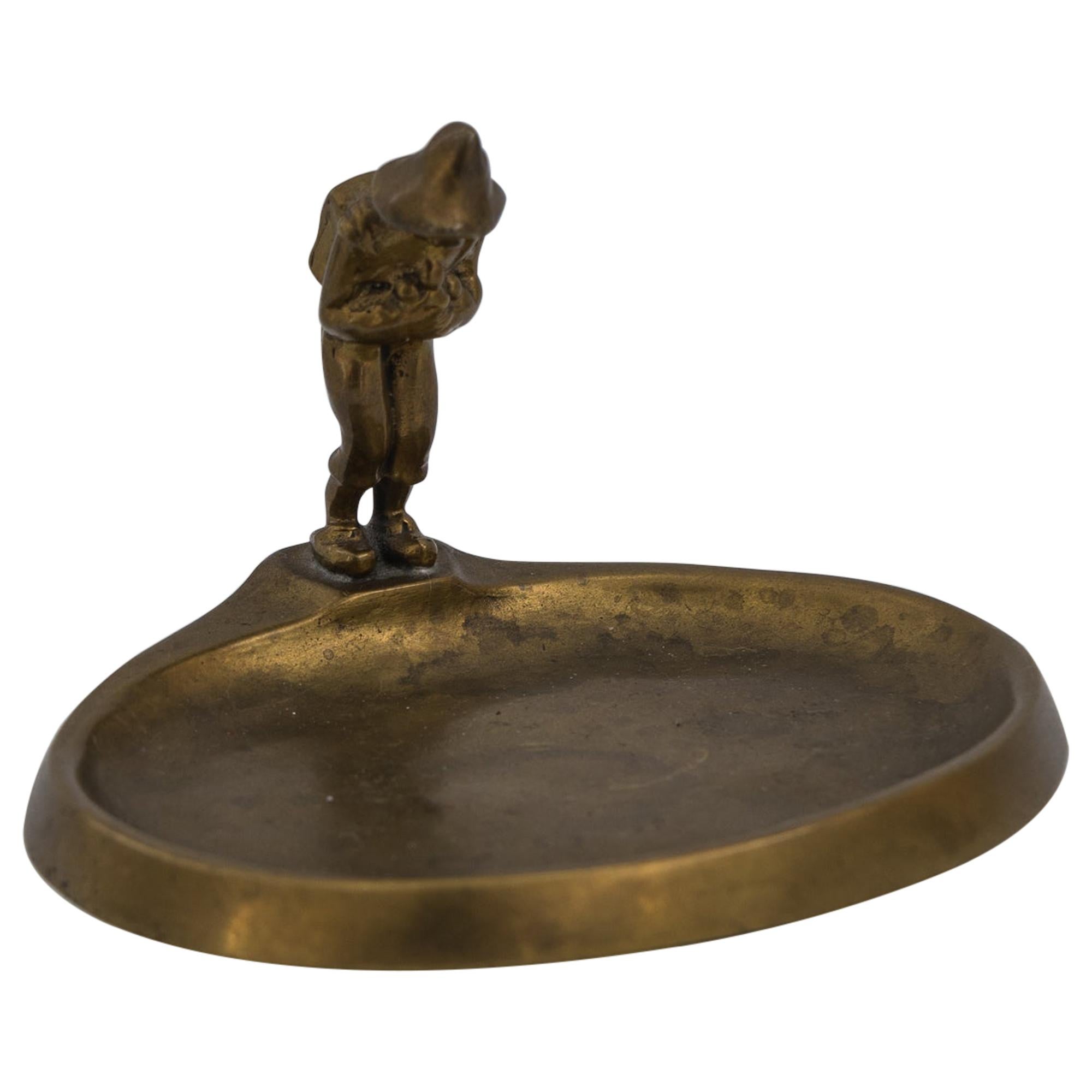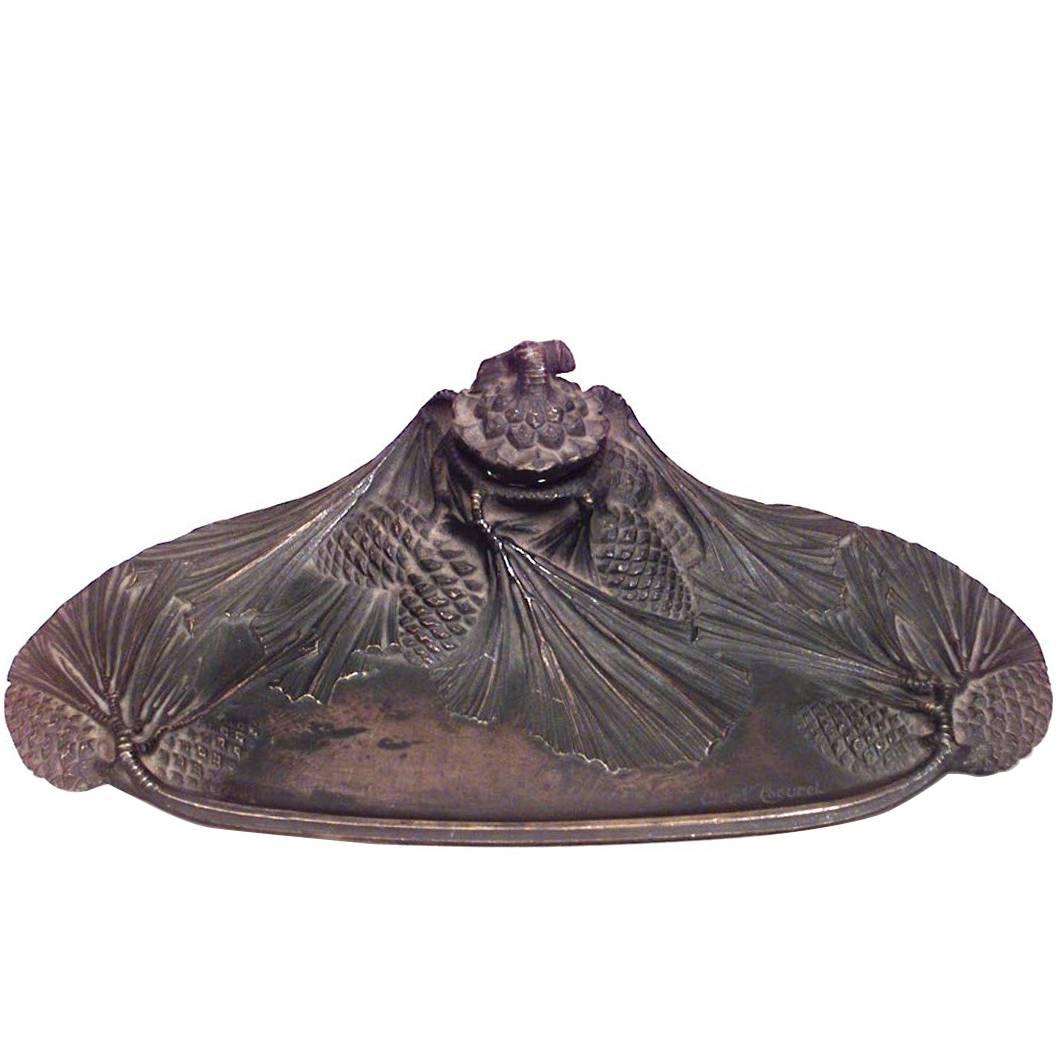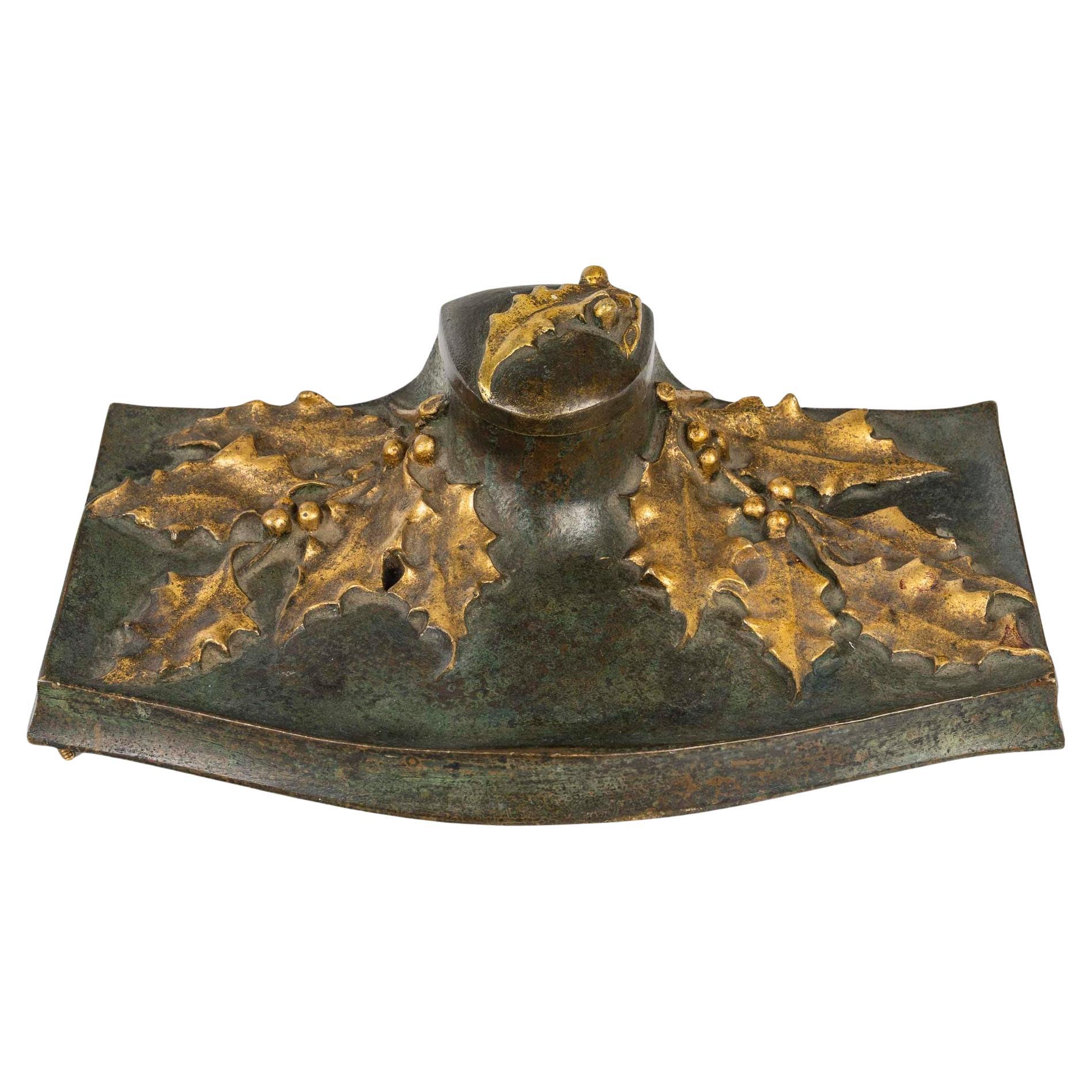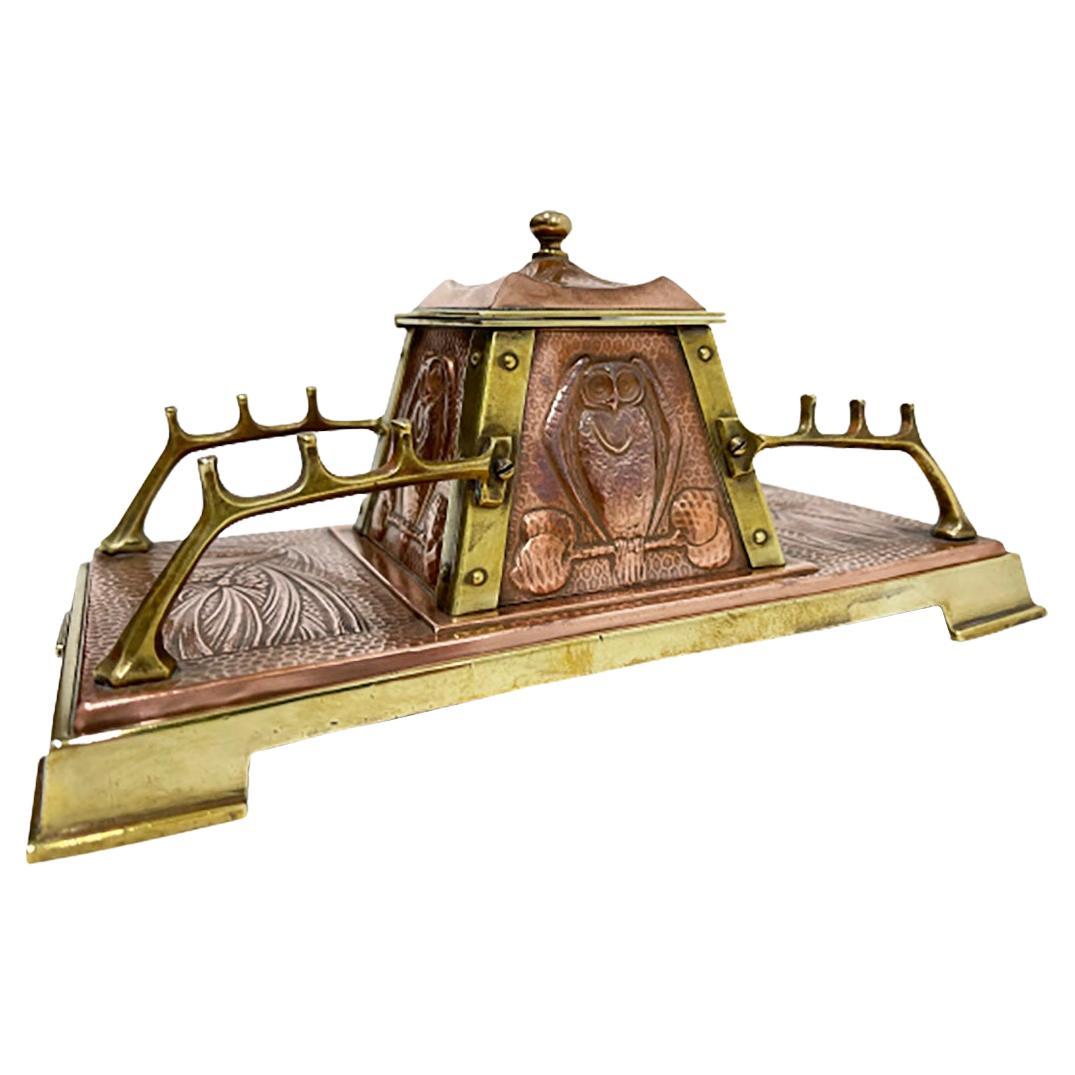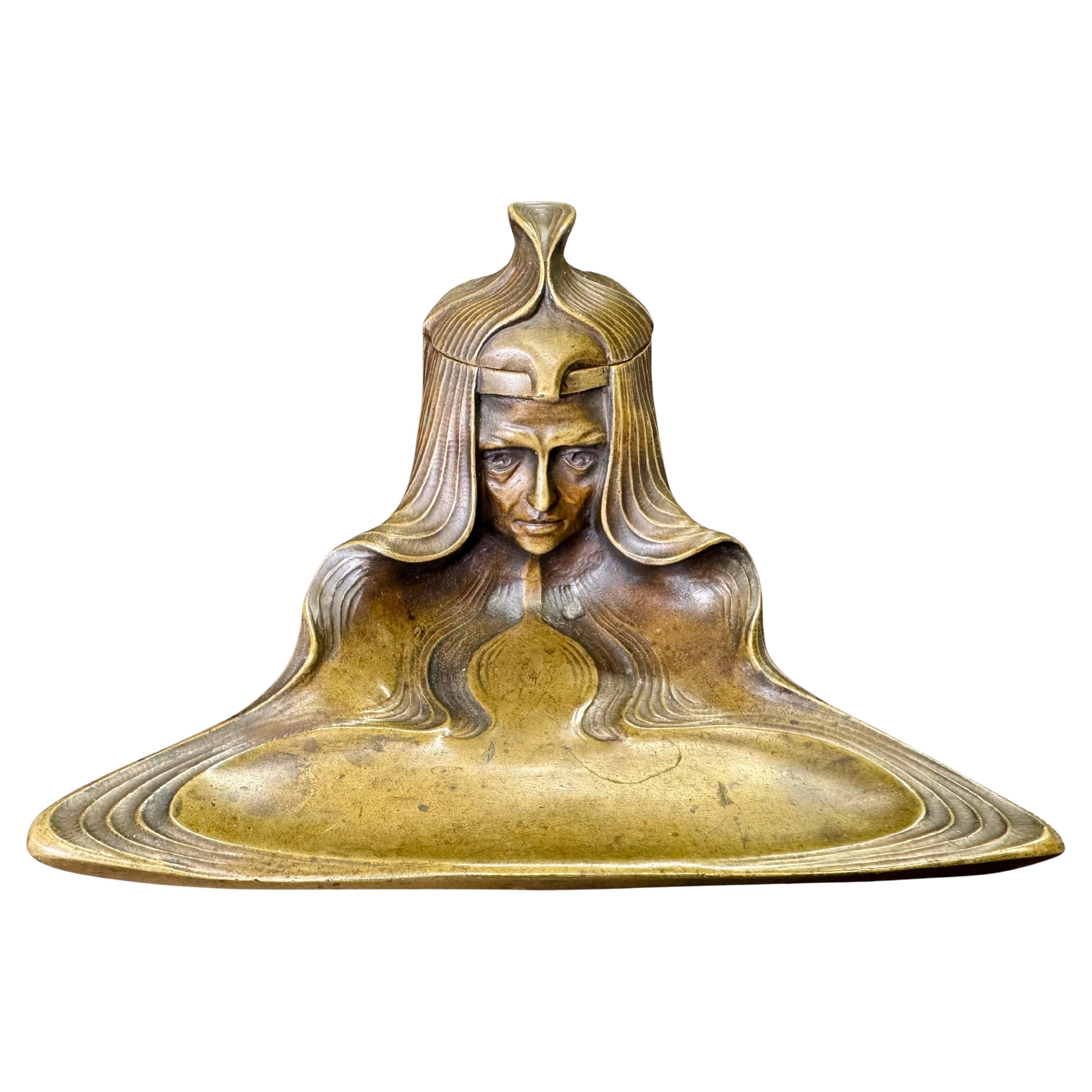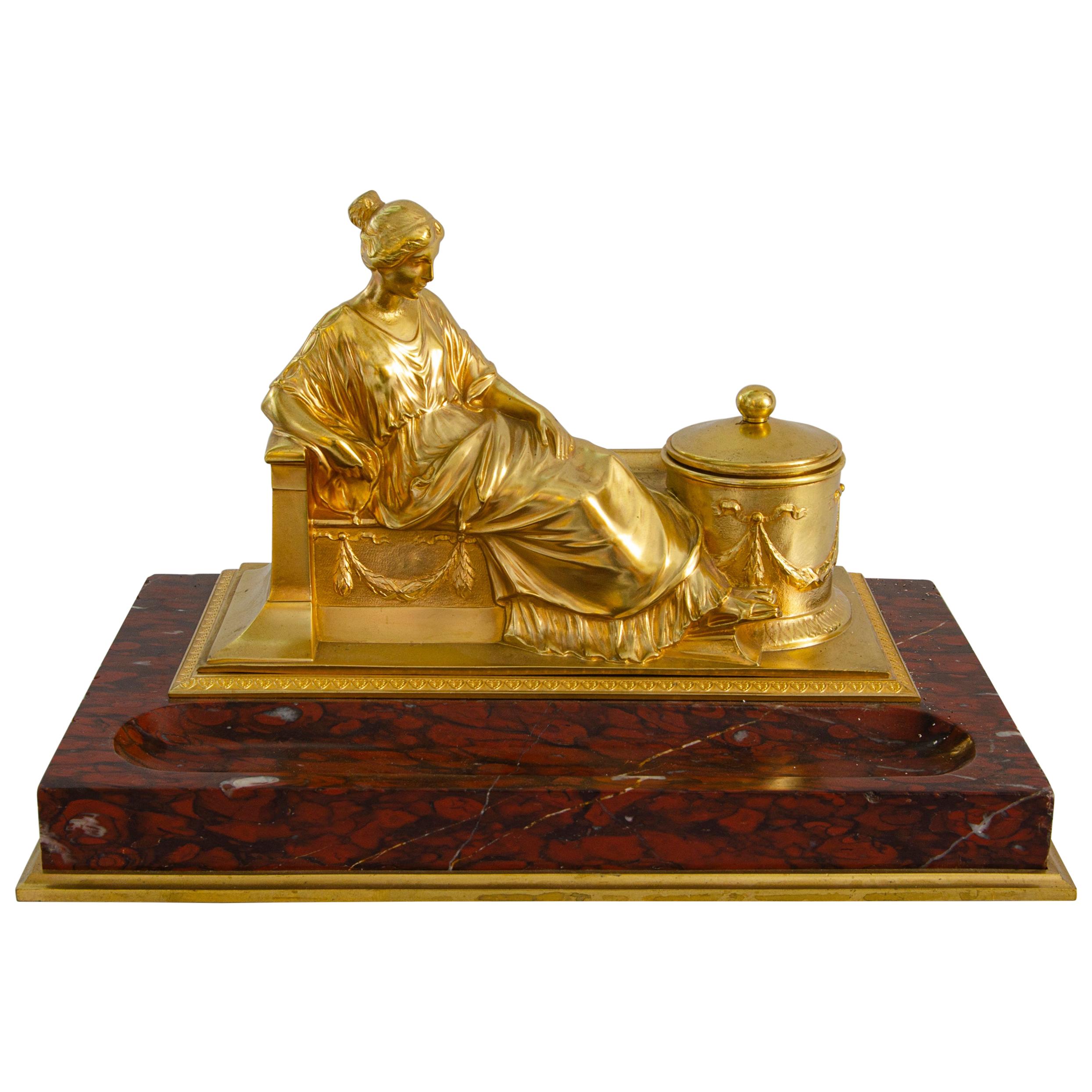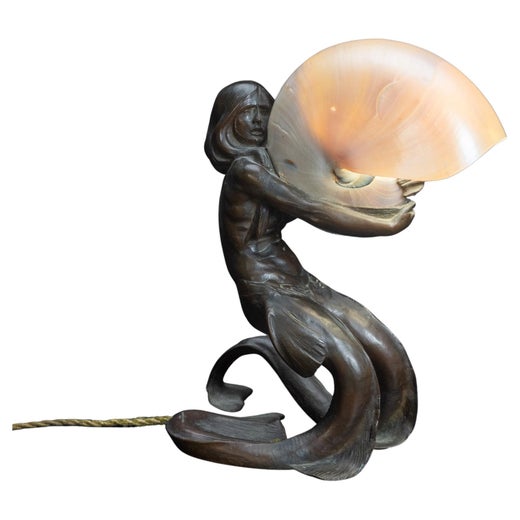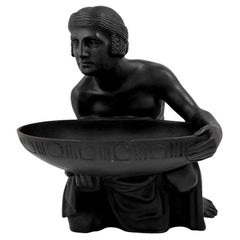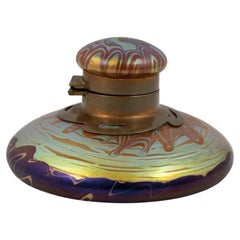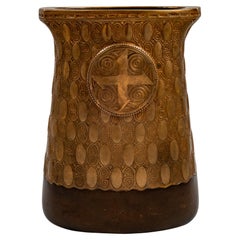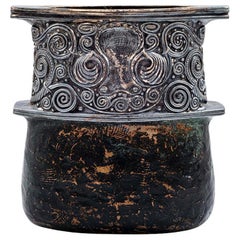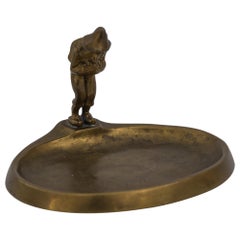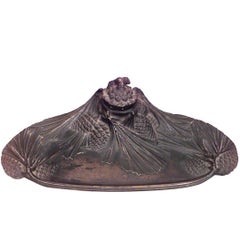Bronze Inkwell "Repos" Gustav Gurschner ca. 1900 Austrian Art Nouveau Jugendstil
About the Item
- Creator:Gustave Gurschner (Designer)
- Dimensions:Height: 5.71 in (14.5 cm)Width: 13.98 in (35.5 cm)Depth: 5.52 in (14 cm)
- Style:Jugendstil (Of the Period)
- Materials and Techniques:
- Place of Origin:
- Period:1900-1909
- Date of Manufacture:circa 1900
- Condition:Wear consistent with age and use.
- Seller Location:Klosterneuburg, AT
- Reference Number:1stDibs: LU5830236868762
Gustave Gurschner
Gustav Gurschner, a sculptor, attended the School of Applied Arts in Vienna in 1888. Working under several artists, his time in Paris in 1897 proved to be most influential with regard to his stylistic development.
Gurschner embraced Art Nouveau, or Jugendstil, as it was known in Austria. Part of the avant-garde movement, he participated in the inaugural exhibition of the Vienna Secession in 1898, maintaining close ties with those who later broke away to form the Weiner Werkstatte.
From 1904–08, Gurschner was a member of the Austrian group, Hagenbund. In addition to creating sculpted works including large-scale commemorative pieces and commissioned works by Emperor Franz-Josef, Gurschner created medals and was quite well known for his Art Nouveau bronze and glass lamps.
Examples of Gurschner's work can be found in the Berg-Isel Museum in Innsbruck and the Musée Galliera in Paris.
Find Gustav Gurschner vases and lamps for sale on 1stDibs.
(Biography provided by Galerie Fledermaus)
- ShippingRetrieving quote...Shipping from: Klosterneuburg, Austria
- Return Policy
More From This Seller
View AllAntique Early 1900s Austrian Jugendstil Figurative Sculptures
Bronze
Antique Early 1900s Austrian Jugendstil Glass
Glass
Vintage 1910s Austrian Jugendstil Vases
Bronze
Antique Early 1900s Austrian Jugendstil Vases
Bronze
Antique Early 1900s Austrian Jugendstil Vases
Bronze
Early 20th Century Austrian Art Nouveau Inkwells
Silver
You May Also Like
Antique Early 1900s Austrian Jugendstil Ashtrays
Bronze
Antique Late 19th Century French Art Nouveau Inkwells
Bronze
20th Century French Art Nouveau Inkwells
Bronze
Antique Late 19th Century English Inkwells
Copper
Early 20th Century Unknown Art Nouveau Desk Accessories
Antique 1890s Austrian Neoclassical Inkwells
Bronze
